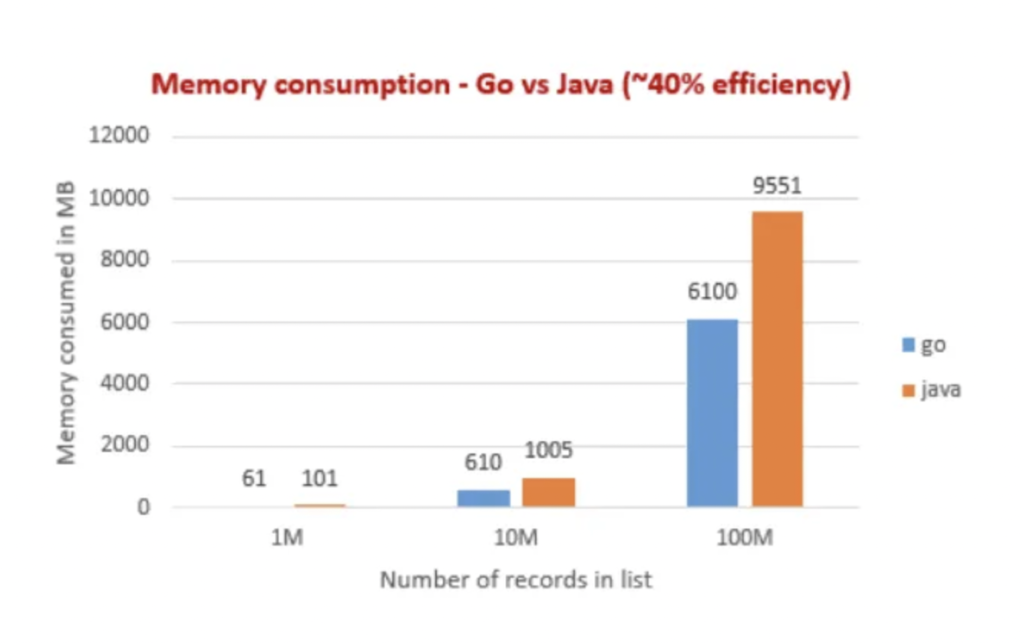
In 2007, Google engineers began work to make their programming better. This effort led to a new language called Golang. By March 2012, it was out for the public. Golang became known for its fast, simple, and wide-reaching capabilities. When comparing languages, the benefits of Golang and the strengths of Java are often measured. Golang, or Go, is praised for making backend systems easier to build. Java, created by James Gosling, is known for strong, movable solutions.
Looking closer at these languages shows why companies like Uber, Twitch, and Dropbox pick Golang. They like its simple use and the fact it works well with older versions. Yet, Java has been the choice for mobile apps, games, and big data handling. Its power in sharing and security makes it unique. The differences between Golang and Java highlight what each offers, helping decide which to use for a project.
Let’s talk about what makes these languages special and how they stand out. It’s not about which is better. It’s how they meet the changing needs of developers together.
Key Takeaways
-
- Golang’s design is built for work efficiency, known for fast processing and working on many systems.
- Java’s unique approach allows it to work across different platforms. It has a wide range of libraries.
- Choosing between Golang and Java often depends on the project’s needs. Do you value speed and ease, or a large library?
- Golang is great for server-side apps. Java is still ahead in mobile and big enterprise projects.
upportive community and a growing ecosystem of tools enhance the appeal of Golang.
Understanding Golang and Java in Modern Development
When we look at software engineering today, choosing between Golang vs Java becomes key. Each language serves different needs and project goals. They have unique benefits for building modern applications.
Origins and Evolution: Golang’s Rise and Java’s Legacy
Java has been crucial in programming since 1995. It’s known for its strength and adaptability across many platforms. In contrast, Golang came about in 2009, designed by Google experts. It tackles challenges like handling many tasks at once and works well with modern processors that need efficient performance. This focus on efficiency and concurrency has boosted Golang’s language popularity.
Programming Paradigms: Statically Typed, Compiled, and Multi-paradigm Approaches
Java and Golang are both statically typed and compiled. This enhances their performance and trustworthiness. Java has a rich library ecosystem that supports complex projects in big enterprises. But Golang’s simple syntax and quick compilation are perfect for microservices and speedy network solutions.
Key Concepts and Usability in Project Planning
Java stands out for its “Write Once, Run Anywhere” feature. It fits well for businesses targeting different platforms, from phones to huge computing systems. Golang, however, excels in fast-paced environments needing quick delivery and expansion, like cloud services and high-speed web apps. The comparison between Golang and Java is vital for firms wanting peak efficiency and software performance.
Knowing the special Java advantages and Golang benefits guides companies to choose wisely. This decision greatly affects their tech strategy and project success. Having this knowledge lets us pick the most fitting tools for our tech projects.
Comparing Performance and Efficiency
When looking at programming, comparing Golang and Java is key. Both have unique strengths. Knowing how they work in actual tasks is crucial. We’ll see how they compare in backend development and optimizing systems.
Speed of Execution: Compiling and Runtime Considerations
Golang can compile straight to machine code. This gives it a big advantage in speed for certain apps. It’s great for tools and serverless architectures that need quick action. Java, though, uses the Java Virtual Machine (JVM), which might slow it down. Yet, Java has improved a lot, thanks to better JVM optimization. Now, it can keep up in many back-end needs.
Memory Management: Garbage Collection Mechanisms
Golang’s efficient garbage collection helps it manage big projects with less memory. This quick cleanup boosts performance, especially in apps that have a lot to handle. Java has a strong garbage system too but uses more memory. This makes Java fit for big companies where apps run non-stop.
Resource Utilization and Optimization in Backend Applications
Golang’s simple yet effective design aids in using resources well. This is key for microservices and applications in the cloud. Java shines in big projects thanks to its huge library and independence from platforms. It’s best for large systems with many users.
Choosing between Golang and Java depends on the project needs and desired outcomes. Golang is top for fast and scalable apps. Java is unbeatable in developing full-fledged systems. Each language supports different development goals and performance needs.
Diving into Concurrency and Scalability
We’re looking at Golang and Java for backend development. It’s important to see how they manage concurrency and scalability. These factors greatly affect an app’s speed and how easy it is for developers to work.
Goroutines in Golang vs Multithreading in Java
In backend development, Golang stands out with its unique way to handle many tasks at once. It uses Goroutines, which are like lightweight threads that the Go system manages. This makes things run smoothly and quickly. On the other hand, Java uses multi-threading which is powerful but can be complex. It might use more resources too.
Scalability Features: Managing Multiple Processes
For scalability, both Java and Golang are strong, but they approach it differently. Java is known for handling big projects well because of its strong tools and libraries. Golang, though, shines with its straightforward approach to handling many tasks at once. This makes it a strong choice for quickly growing systems that need stable and easy-to-manage back-end services.
Developer Productivity and Application Responsiveness
Golang’s easy rules and quick build times mean developers can work faster. This helps get new things out quicker. Golang keeps apps running well, even as they grow. This makes it popular for businesses that want smooth development and responsive apps. Java, with its vast selection of tools and frameworks, remains a trusted choice for many developers. It has solutions that have been relied on for many years.
When considering Golang vs Java, we see each has its own strengths. The best choice depends on what the project needs, how big it needs to grow, and how familiar the team is with each language.
The Developer Ecosystem and Community Resources
The strength of a programming language greatly hinges on its developer community and available resources. We explore how Golang and Java serve their users with their ecosystems. Each promotes growth via active participation and ongoing development.
Library and Framework Availability for Golang vs Java
Java’s developer community has flourished for over twenty years. It boasts a vast collection of libraries and frameworks for many development needs. Spring and Java EE stand out, offering powerful solutions for enterprise applications. In contrast, Golang, though newer, features efficient frameworks like Gin and Echo. These are perfect for crafting quick and lightweight web services.
Community Support and the Global Developer Network
Java’s worldwide developer community offers vast knowledge and support. This is available through forums, social media, and many annual conferences. Golang’s community, though smaller, is growing quickly and is keen on new technologies. This makes it an excellent resource for innovative projects, especially in cloud-native applications.
Emerging Trends and Ongoing Development Contributions
The Golang and Java communities actively contribute to technology and development practices evolution. Their work, from launching new libraries to refining platforms, shapes programming’s future.
| Feature | Java | Golang |
|---|---|---|
| Performance | High performance with JVM optimization | Compiled directly to machine code for speed |
| Concurrencies | Multithreading | Goroutines |
| Memory Management | Efficient garbage collection | Minimal overhead garbage collection |
| Community Size | Very large, global presence | Rapidly growing, highly engaged |
| Typical Use Case | Enterprise applications, Android apps | High-performance backend services, cloud applications |
Looking at the features comparison and programming language comparison, the choice between Golang and Java often comes down to specific project needs and community engagement preference. As trends shift, both languages stand ready to adapt, backed by their active ecosystems and dedicated users.
Conclusion
In our journey of exploring Golang vs Java, we’ve found key insights. Each language has strong points, depending on the use-case and application areas. GoLang shines with its quick handling of multiple tasks because of modern programming styles. This makes it great for microservices and applications that run on cloud platforms.
Java, on the other hand, is known for being stable and reliable. It has been around for a while and has a huge support system. This makes Java developers very valuable, with salaries that are competitive with GoLang developers. Both languages are excellent in their ways. They offer great performances and opportunities for developers in the tech industry.
As we look toward 2024, choosing between GoLang and Java depends on what each project needs. GoLang is often chosen for its efficient, scalable solutions in distributed systems. Java remains the go-to for big, complex enterprise applications. In the ever-changing tech landscape, both GoLang and Java will keep playing important roles. They help us create innovative solutions in our connected world.
FAQ
What are the main differences between Golang and Java?
Golang, or Go, is made to be simple, efficient, with modern ways to handle many tasks at once. It’s a language made for fast performance. Java is older and well-known for lots of tools, being object-oriented, and working on many computer types because of the Java Virtual Machine (JVM).
How did Golang and Java evolve in the software development industry?
Golang was made by Google in 2007 and shared with everyone in 2009. It’s for making programming easier when dealing with lots of data and devices. Java was made by James Gosling at Sun Microsystems in 1995. It’s loved for its “write once, run anywhere” principle and is great for big applications.
What are the performance and efficiency comparisons between Golang and Java?
Golang is usually faster because it turns directly into computer instructions and is good at doing many things at once efficiently. Java might be a bit slower because it works on the JVM, but it gets more efficient with time due to optimizations.
How do Golang and Java manage memory and garbage collection?
Both Golang and Java use garbage collection to manage memory automatically. Golang’s garbage collector is designed to be fast and efficient. Java’s garbage collector is very strong but may use more computer resources.
What concurrency features do Golang and Java offer?
Golang deals with concurrency using Goroutines and channels. This makes handling multiple tasks easier and more efficient. Java uses threads for concurrency. Threads can be a bit harder to manage but are very powerful when used right.
Which language is better for scalability in backend applications?
Golang is often the first choice for easy scaling, especially in cloud settings, because of its efficient concurrency handling. Java also scales well, mainly in big companies, but needs more careful thread and resource management.
How does developer productivity differ when using Golang versus Java?
Golang may lead to faster coding due to its simpler syntax and quick compilation. Java can also help developers be productive, offering a lot of libraries and tools for big applications, even if it’s a bit harder to learn.
Why is the developer community important in choosing a programming language?
A strong developer community means lots of shared tips, resources, and help which is great for learning and solving problems. Java has a very big and helpful community. Golang’s community is growing fast, excited about modern programming challenges.
How does the availability of libraries and frameworks compare between Golang and Java?
Java has lots of libraries and frameworks like Spring and Hibernate, used in big applications. Golang has fewer but growing options like Gin and Beego, focused on being fast and easy to use.
What are the emerging trends in language contributions for Golang and Java?
Both Golang and Java are evolving with new contributions. Golang is becoming popular for cloud services and small services due to its efficiency. Java is focusing on making applications easier to run and improving performance, with updates like Project Loom and new enhancements.
Future App Studios is an award-winning software development & outsourcing company. Our team of experts is ready to craft the solution your company needs.










